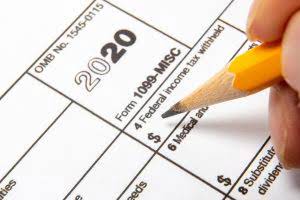Inventory Turnover Ratio Formula
Content

With ShipBob’s technology combined with nationwide fulfillment, you can gain a holistic view of your operations with just a few clicks. ShipBob’s built-in inventory reportslet you view a trend analysis of your products and give you more control over the key metrics that drive business growth.
There are multiple ways to calculate inventory turnover, and the resulting ratio can tell a lot about an organization’s inventory management, sales, and marketing. The https://www.bookstime.com/ is a formula that helps you figure out how long it takes for a business to sell through its entire inventory. A higher ITR usually means that a business has strong sales, compared to a company with a lower ITR. Knowing your inventory turnover ratio should not be taken lightly. One study found that annual inventory ratios of companies can predict future stock performance. The ability to control annual inventory turns is a good indicator of the quality of management in other areas of the business.
How Do You Calculate The Inventory Turnover Ratio?
Will depend on several factors, including the industry you work in, the nature of the products you sell, and the markets you serve. To reduce their carrying costs by resisting the urge to buy in bulk, even where there are economies of scale or discounts to be had. If those products aren’t going to shift, those potential savings from the manufacturer could be meaningless. High inventory turnover indicates that there is a direct and healthy relationship between the amount of inventory you purchase and the amount you sell. All it is is the sum of beginning and ending inventory—from a specific time period—divided by two. This means that Donny only sold roughly a third of its inventory during the year.
Calculating your inventory turnover ratio is akin to a doctor taking a patient’s temperature. An unhealthy ratio, just like a high temperature, is a surefire sign of a problem. The inventory turnover ratio is very easy to calculate but a little tricky to interpret. Firstly, we should analyze the ratio for any company by keeping the industry standards in mind. Secondly, different cost flow assumptions like FIFO and LIFO result in different inventory turnover ratios in varying scenarios.
- The more inventory you hold, the more you reduce the opportunity to sell different products, and your competitors may sell them.
- We need to get a particular number for the average inventory.
- By managing inventory turnover in relation to a company’s peers, it can help identify emerging opportunities.
- This way you can determine the prices based on seasonality, week of the day or even hourly pricing changes.
Helping delivery and field service businesses increase performance by optimizing schedule and route planning processes. Take the value of your inventory at the beginning of your defined time period, add it to the value of your inventory at the end of that time, and then divide that number by two. Many companies get so caught up in increasing revenue that they compromise profits. If the time for a single SKU to turn over is too long, then it’s draining your resources, even if it eventually sells.
We And Our Partners Process Data To:
However, in some instances a low rate may be appropriate, such as where higher inventory levels occur in anticipation of rapidly rising prices or expected market shortages. Another insight provided by the inventory turnover ratio is that if inventory is turning over slowly, then the warehousing cost attributable to each unit will be higher. Whether goods are perishable, seasonal, or highly vulnerable to changing trends, excess stock can easily become a burden to your cash flow, if not carefully handled. An overabundance of low-demand (or no-demand) goods means money down the drain. It’s super-important to calculate your inventory turnover ratio in order to avoid this situation developing. With a well-balanced supply-and-demand chain, your business should be able to stay in the clear.
There is also a limit to how high an inventory ratio can be before it likely indicates that inventory is not being purchased in a suitable quantity to meet the current rate of demand. This is not a universal rule, though, as some goods may ordinarily have a low Inventory Turnover Ratio. This would give The Sweater Shop an inventory turnover ratio of 2. Then, use the formula, and calculate the inventory turnover using the annual inventory. The formula is also useful for calculating the amount of time necessary to sell any inventory that is on hand currently. You can also use your Sales instead of your CoGS to calculate your ITR. Generate the data for the period you want to calculate the ITR for.
Days Sales Of Inventory Or Days Inventory
For example, automobile turnover at a car dealer may turn over far slower than fast-moving consumer goods sold by a supermarket (snacks, sweets, soft drinks, etc.). It can help small retailers better manage decisions on how much inventory to buy, how to evaluate how inventory is performing, and assist with future inventory procurement. Such software may be tailored to some degree but may not be useful for all types of merchandise. For example, it may work best with seasonal merchandise and fashion, but may not be a good fit for fast-selling consumer goods or basic items and staples. Adjust pricing to realize larger margins on items in high demand and to free capital by moving old inventory, also known as dead or obsolete inventory, out. If items just won’t sell, consider donating that stock to charity and taking a tax deduction or offloading it through a secondary channel. Inventory turnover is typically measured at the SKU (stock-keeping unit) level, or segment level for tighter controls on specific stock levels.
Given how frequently babies use socks, this number is quite good for the business -almost one pair of socks for every season. It’s commonly advised to use the second method, which uses the cost of goods sold data. Inventory Turnover Ratio is a key to efficient stock replenishment.
- Although Coca-Cola’s ITR was lower, you might find other metrics that show that it was still stronger than the other averages for its industry.
- Learn to calculate inventory turnover ratio, and the best ways to manage your inventory purchasing plan to ensure a profitable business.
- For example, consumer packaged goods usually have high turnover, while very high-end luxury goods, such as luxury handbags, typically see few units sold per year and long production times.
- To put this vital metric to good use, you don’t just need to know how to calculate inventory turnover rate—you need to know how to improve it.
- With food prices rising, try to lock in long-term prices for food items that you’re likely to use regularly.
- If you have your cost of goods sold on hand, you should use that number instead of sales.
- Such software may be tailored to some degree but may not be useful for all types of merchandise.
The ITR is just one type of efficiency ratio, but there are many others. Full BioAriana Chávez has over a decade of professional experience in research, editing, and writing. She has spent time working in academia and digital publishing, specifically with content related to U.S. socioeconomic history and personal finance among other topics. She leverages this background as a fact checker for The Balance to ensure that facts cited in articles are accurate and appropriately sourced. In the meantime, start building your store with a free 14-day trial of Shopify.
Ways To Manage And Improve Inventory Turnover
Number of KPIs that can provide insights into how to increase sales or improve the marketability of certain stock or the overall inventory mix. Average inventory is also the main determinant of the inventory turnover ratio and this value also used in some of the calculations you’ll see below. No matter how simple it looks, calculating the average inventory periodically is going to change the way you run your retail business. A slight variation of the inventory turnover ratio analyzes the number of days that a company holds inventory in its stores and warehouses before it’s sold to customers. This provides the same information as the original turnover ratio, but reports it in terms of the number of days rather than the times per year inventory is replaced.

You should always compare your business within your own vertical. If you are working with fast-moving consumer goods, your ideal inventory turnover rate is expected to be more than, say, working in luxury fashion. There are two common ways when calculating the inventory turnover ratio. Sell through ratio calculated by taking the percentage of units sold of the beginning stock over a given period. This value is also referred to as liquidity ratio, as it tells you the amount of inventory you’ve successfully sold. However, this ratio should be monitored closely as the 100% liquidity rate also means that you ran out of items to sell. The ratio is most effectively used to determine your replenishment schedule.
Product Bundles
Also, consider the seasonality of your products and examine the profitability of each SKU. A low turnover rate may point to overstocking, obsolescence, or deficiencies in the product line or marketing effort.
With these two documents, you just need to plug the numbers into the formula. Only Shopify POS helps you manage warehouse and retail store inventory from the same back office.
The purpose of increasing inventory turns is to reduce inventory for three reasons. Conversely a high turnover rate may indicate inadequate inventory levels, which may lead to a loss in business as the inventory is too low. Any higher than six is an indication that the consumer exceeds supply. That means your inventory purchase levels might actually be too low, leading to lost sales opportunities as a result—or negative customer experiences from delayed deliveries. If you can get there, you’ll increase demand and revenue together.

It’s easy to calculate in theory, but it’s not always easy to interpret. Then, you need to know your business’s cost of goods sold and average inventory during that period . Inventory includes all the goods you have for sale and in storage, such as raw materials, items in the production process, and finished goods. Inventory turnover is a type of ratio that shows you how efficiently you manage that inventory. The inventory turnover ratio, or stock turnover ratio, tells you how often you sell or use and replace inventory during a time period (e.g., month). The inventory turnover ratio determines the number of times the inventory is purchased and sold during the entire fiscal year.
Inventory Turnover Example
Most restaurants operate on a first-in, first-out inventory method, or FIFO. In this case, the goods purchased first are the goods sold first.
This metric is an important figure because, in order to avoid excess inventory, you have to make sure that your average inventory level is as close as it gets to your net sales. Make sure that you use the net sales value for this calculation by subtracting your return sales data from your gross sales over the given time period.
The second variation is better as both COGS and inventory are recorded at a cost whereas sale in the first formula is recorded at market value. When the inventory turnover ratio is low, it indicates that a business has too much inventory on hand. This can indicate that much of the inventory is obsolete or that the firm has acquired more inventory than it can sell within a reasonable period of time. It is a strong indicator of poor inventory control practices, such as purchasing in excessive volumes and not selling off obsolete inventory before it loses all of its value. However, low turnover can also indicate that management has committed to the practice of fulfilling all customer orders immediately, which calls for a larger investment in inventory. Inventory turnover ratio is the business metric that tells you how healthy your product business is.
Multiple data points, for example, the average of the monthly averages, will provide a much more representative turn figure. System to track and analyze all of your inventory-related data in a single place.
How To Know If A Company Is A Worthwhile Investment
The inventory turnover ratio is a measure of how many times the inventory is sold and replaced over a given period. Companies can calculate inventory turnover This standard method includes either market sales information or the cost of goods sold divided by the inventory. The turnover ratio is derived from a mathematical calculation, where the cost of goods sold is divided by the average inventory for the same period. A higher ratio is more desirable than a low one as a high ratio tends to point to strong sales. Generally, however, items drift along somewhere in the middle, meaning all companies need a handle on what’s moving and how quickly. That inventory turnover calculation informs everything from pricing strategy and supplier relationships to promotions and the product lifecycle. So, each retailer should work on finding the optimal ratio for their own nature of business.
For example, a relatively high inventory turnover compared to the industry or your past performance is a good indicator of healthy sales and efficient purchasing. Your company is apparently making good inventory investments without overstocking. Many investors use a company’s sales and its ending inventory to calculate its inventory turnover ratio. SourceConnect your inventory management software to your route optimization software.
Although Coca-Cola’s ITR was lower, you might find other metrics that show that it was still stronger than the other averages for its industry. Using historical data to compare current years to past years could also provide helpful context. There are many reasons why a company may have a lower ITR than another company. It doesn’t always mean that one company is worse than the other.
